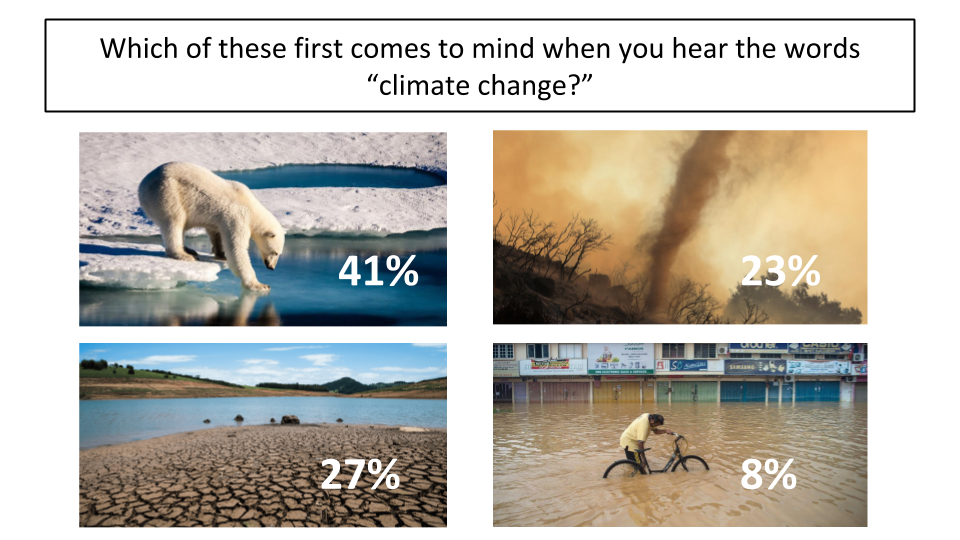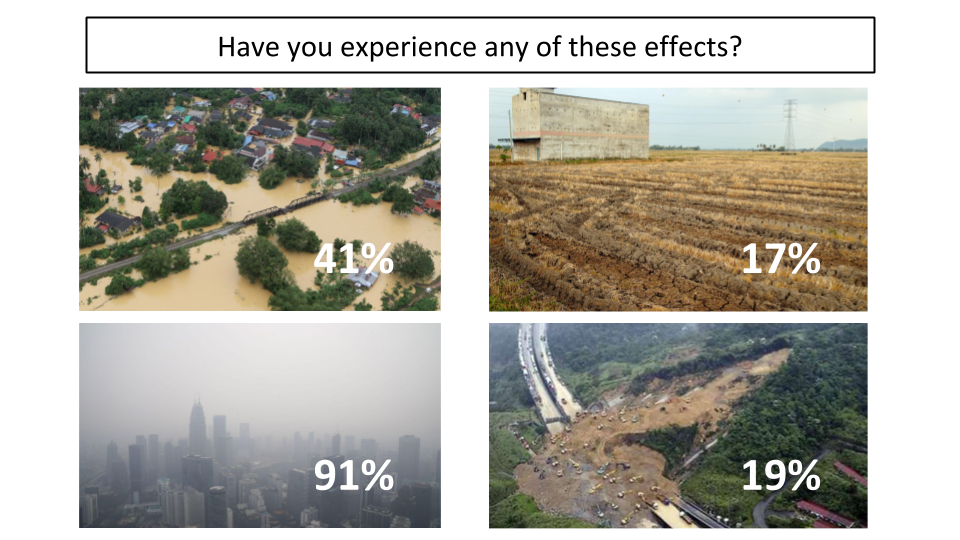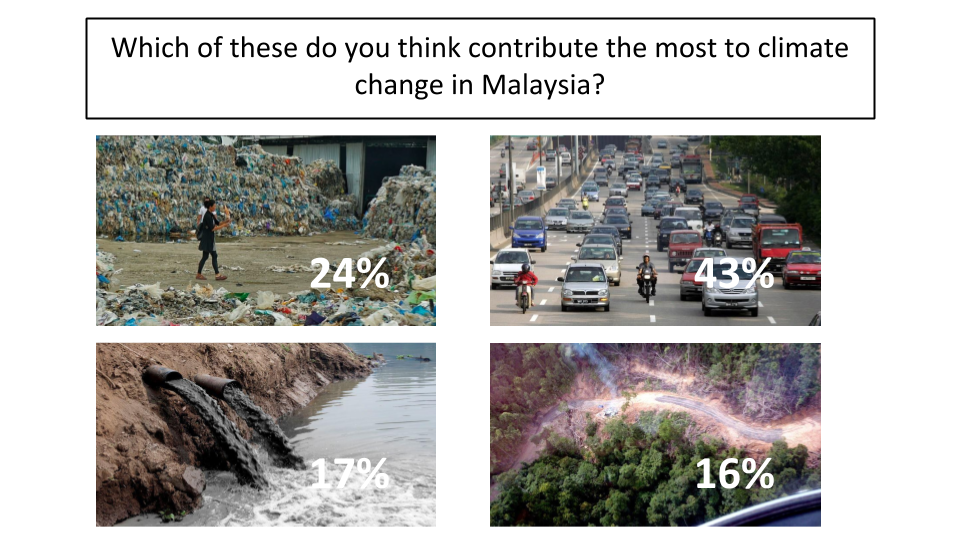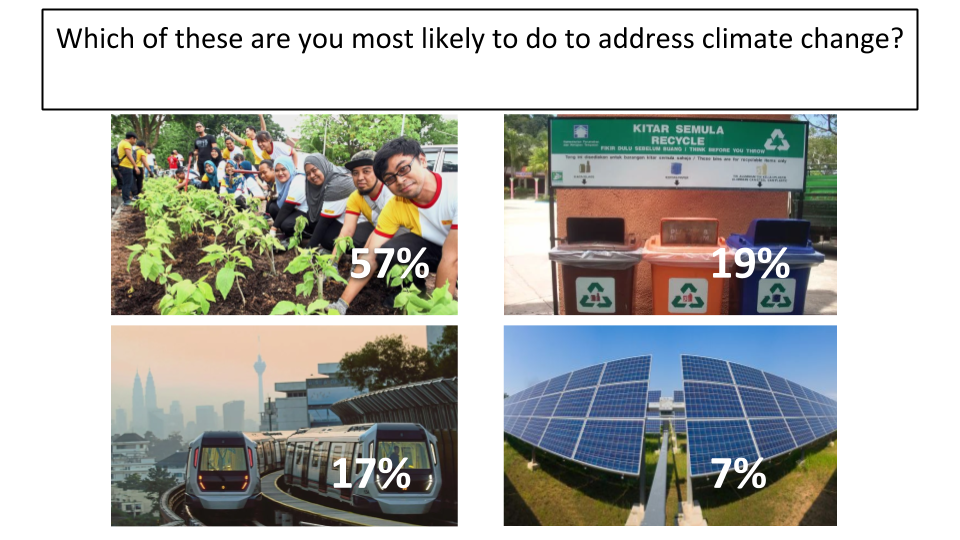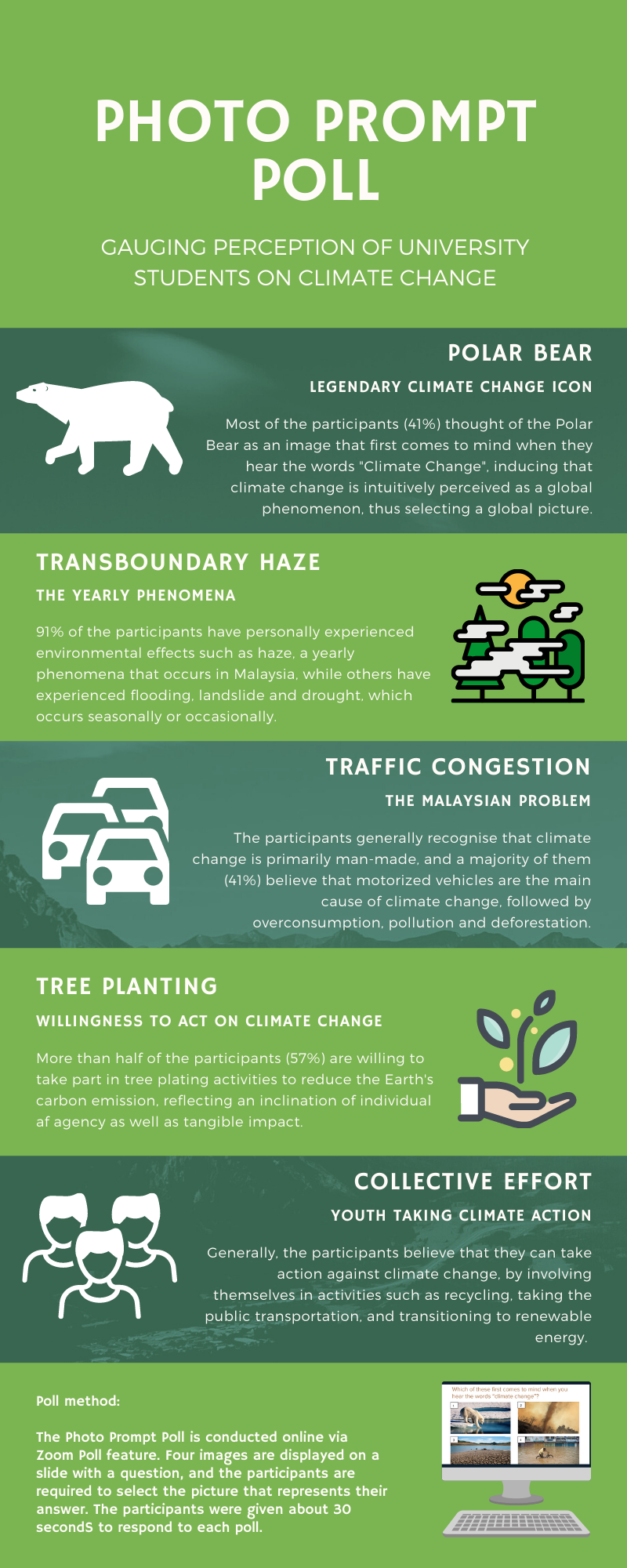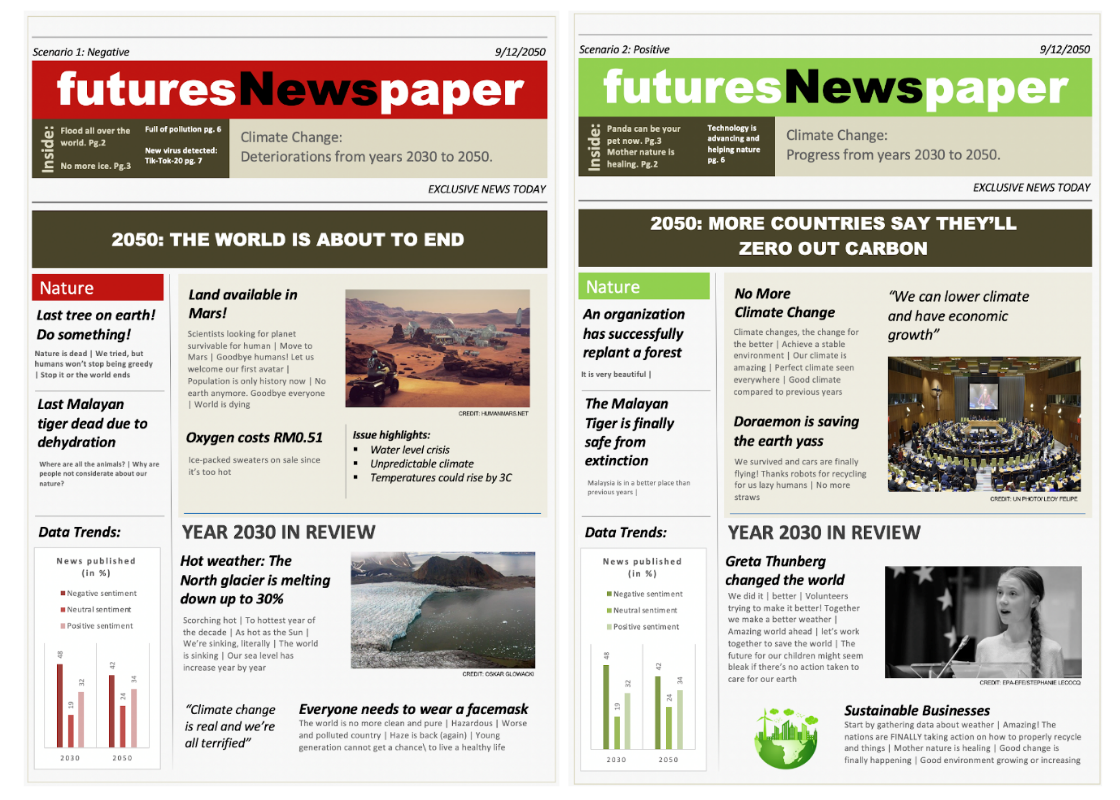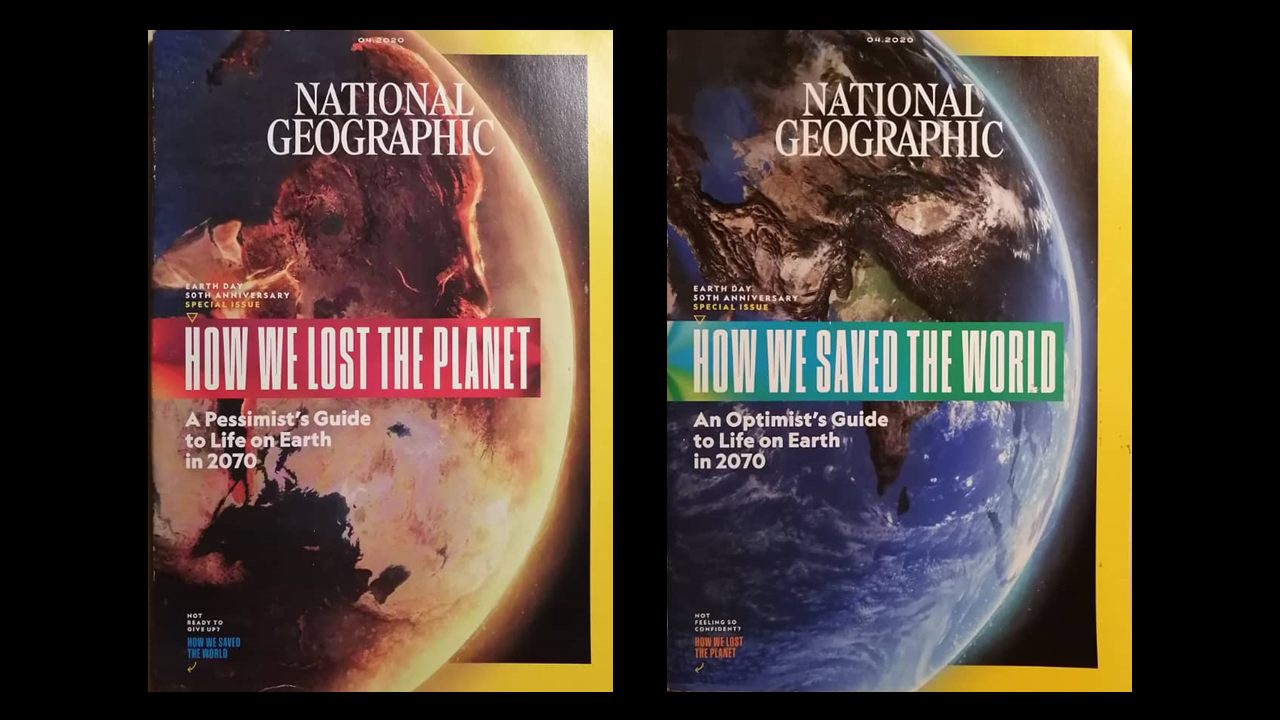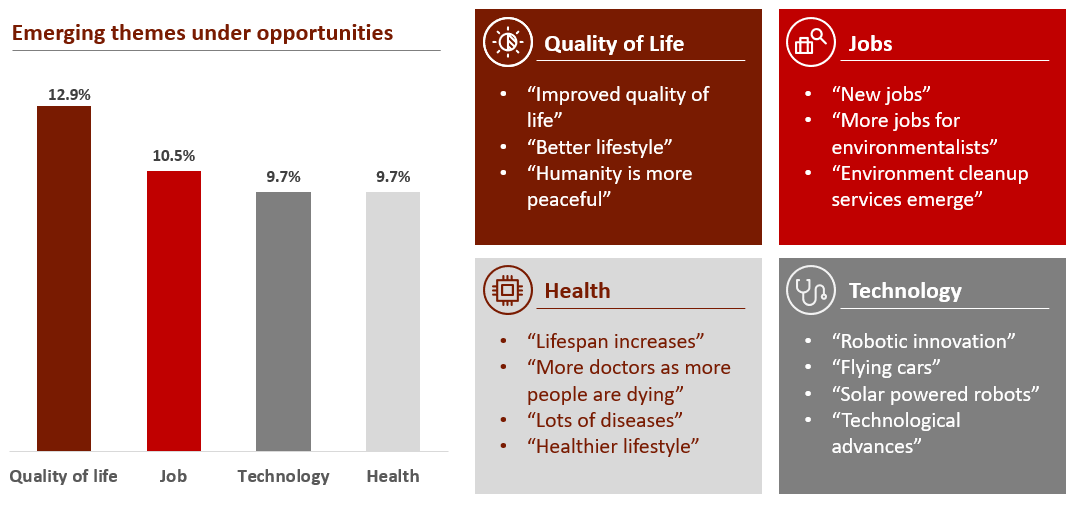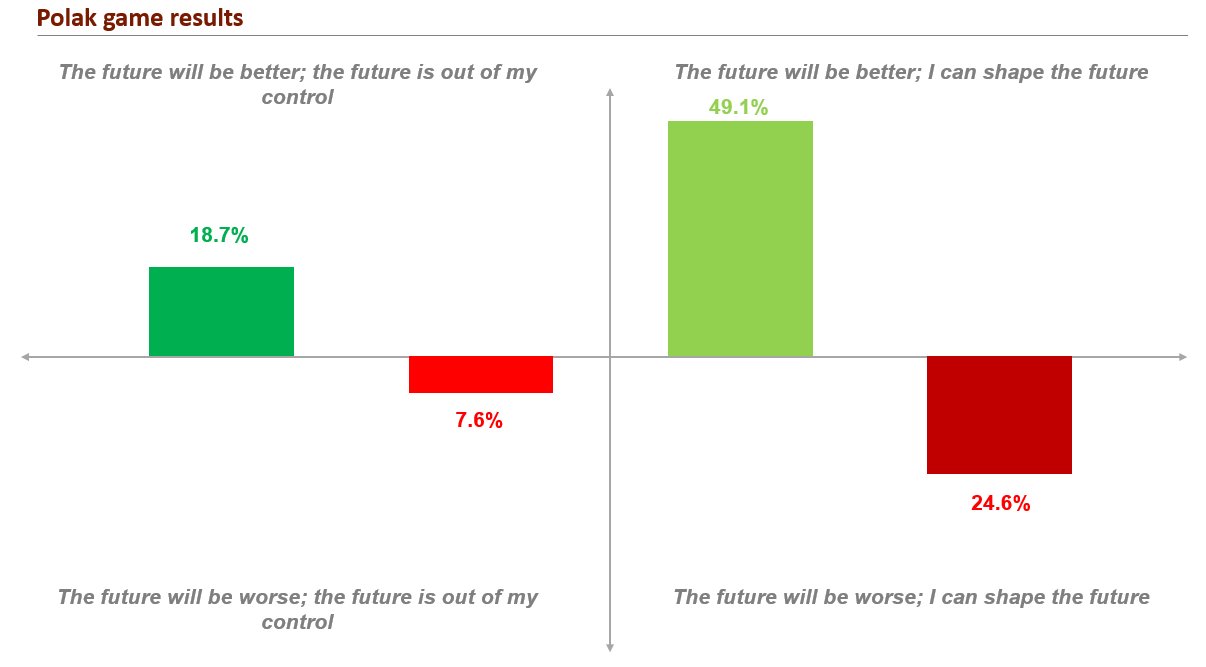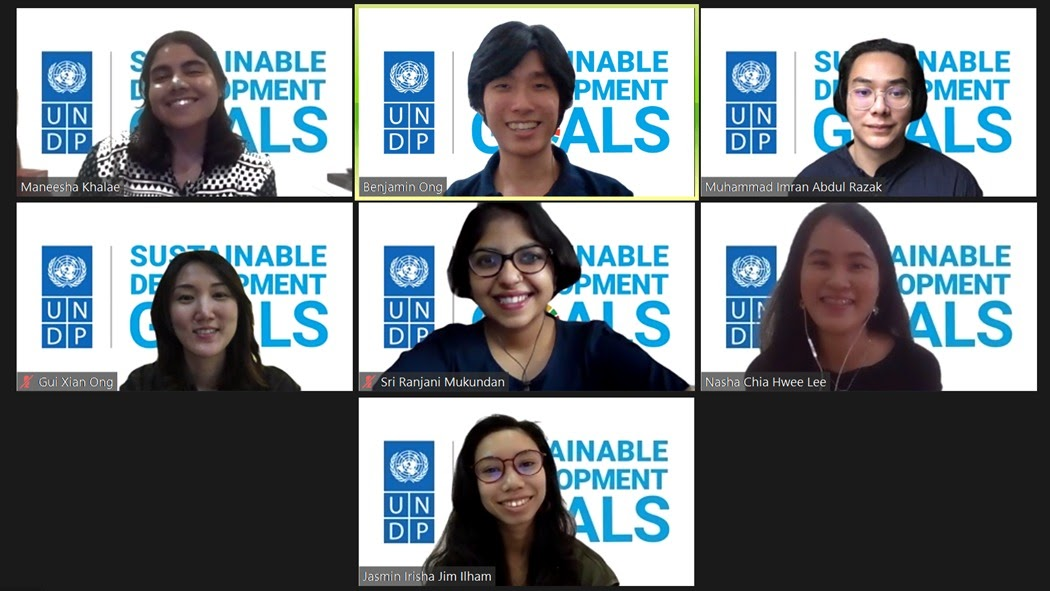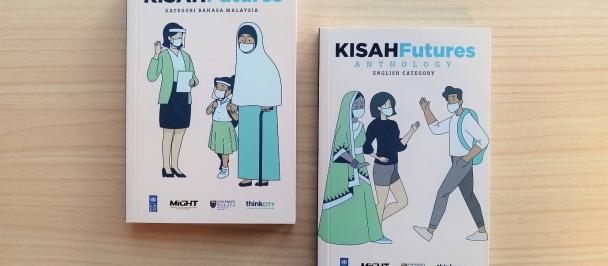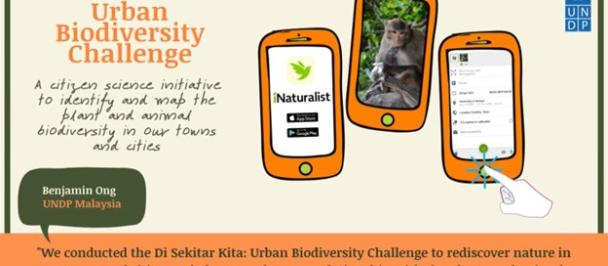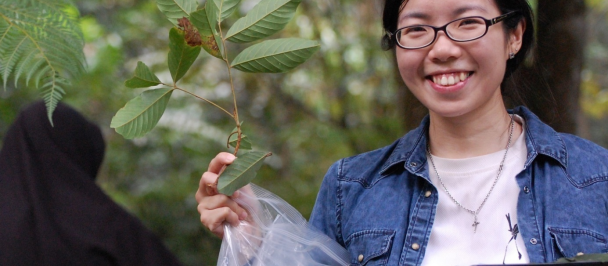Inspired by our earlier COVID-19: 3 Lessons for Climate Change blog post, the Management & Science University (MSU), Malaysia, invited co-authors Nasha Lee and Benjamin Ong to give a talk to MSU students on 9 July 2020. The event was envisioned as a straightforward webinar—presentations followed by a short Q&A—but the authors decided to take advantage of the opportunity to run a mini-experiment around youth engagement, foresight and audience participation led by us, the Climate and Exploration “summer” interns at UNDP Malaysia.
The 90-minute session was attended by over 200 students, and encompassed a Photo Prompt Poll activity, a presentation on the interlinkages of climate change and COVID-19, an interactive foresight suite including News of Tomorrow and the Polak Game, and a wrap-up Q&A session.
We learned that the need to localize climate narratives and decentralize climate governance is more urgent than ever. A large part of policy making and intervention planning depends on knowledge of your audience, what they think of the issue and how they see themselves being part of the solution, or not. We also learned that using visual and interactive activities can be a simple, non-threatening, and even fun, way to introduce complex and abstract concepts like foresight… not to mention liven up typically boring webinars!
This blog post presents the case for youth engagement in climate action by reflecting on locating climate change narratives in the local context, exploring future climate scenarios, and recommending youth agency to create urgency.
The case for youth engagement in climate action
Climate change remains a severe threat towards development, stability of countries, and the health of the environment and ecosystems. Extreme weather events that are worsening year by year are continuously endangering people’s lives and livelihoods. By 2050, with a projected increase of global population to 9.6 billion, an equivalent of almost three planets worth of resources is needed to sustain our current way of living, if our current consumption and production patterns remain the same.
Around the world, the youth movement in climate action has been gaining momentum. Youth are increasingly aware of the challenges and opportunities that climate change poses, the urgency of the issue, and the need to act upon it. Following Greta Thunberg’s inspiring speech at the COP24 Climate Change Conference in Poland, 2018, and subsequently the Fridays for Future movement, there has been a spike in youth mobilization to tackle climate change. This in turn gained traction for world leaders to take action, with many countries and local governments declaring that they are in the state of ‘climate emergency’. In Malaysia, urban youths primarily have taken the streets, participating in the Global Climate Strike in Kuala Lumpur in 2019.
Climate change is a youth issue, and how young people understand and engage with climate change is a critical question. The most severe impacts of climate change will be faced by future generations, leaving today’s youth one of the most vulnerable groups of our population. Conversing about climate change in the times of coronavirus can be overwhelming—it is not easy to talk about the ongoing global crisis on top of the dominant global pandemic.
It is important to recognize that although youth are among the most vulnerable, they are potentially also the best placed to generate an ambitious societal response to combat climate change and its risks. Surprisingly, there is very little existing knowledge on what young people think about climate change, or how youth are taking action against climate change, especially in Malaysia. There is a possible gap in climate change awareness among youth across the nation. While newspaper headlines are reporting that climate action amongst youth is on the rise, lack of awareness still persists depending on the different demographics and socio-economic background. In order to build public support for climate action and to overcome the awareness gap, it is necessary that climate action is locally meaningful for all youth and rooted in the local context.
Locating climate change narratives in the local context
The starving polar bear is ubiquitous and a classic climate change icon; a once-fearsome predator reduced to a shabby scavenger amidst a mass of melting ice caps. The subject of polar bears and the ‘typical’ images of climate change have arrested the world, but the world has yet to arrest the issue of climate change. The problem may lie in the fact that we are not effectively communicating the issue in an easily understandable and localized manner.
To gauge the participants’ initial perception of climate change, the MSU talk kicked off with a Photo Prompt Poll activity. Four series of slides were put together, which included four different pictures. The slides addressed overarching questions of the primary image linked to climate change, natural disaster experience, causes of climate change, and climate action.
Based on the poll, the majority of the MSU students associated climate change with the polar bear—an image that is not relevant to the Malaysian climate. And yet, while the first perception of climate change is far away, 91% of the participants had personally experienced environmental effects such as haze, a familiar local phenomenon that has become an almost-yearly occurrence:
Furthermore, on the slide on which the polar bear was displayed, there were three other pictures demonstrating what one would think to be more local manifestations of environmental degradation. The question of framing here becomes quite interesting; is it fair to posit that the polar bear is somehow more charismatic or tangible or are the students merely following the Western-focused framing when it comes to climate change? Additionally, cause and effect are not very straightforward in studying and communicating climate change. One cannot directly attribute floods to climate change. Thus, although it is something concrete that the students experienced, perhaps they used the intuition that since climate change involves global warming, ice caps melting is a much more direct link. The greenhouse gas link to anthropogenic climate change was evident, as over 40% identified motor vehicles as the main cause of climate change in Malaysia:
Turning this inquiring lens to the participants’ responses in regards to addressing climate change, over half the participants selected tree planting as the most likely action they would take, with renewable energy sources lagging far behind.
This may reflect an inclination towards individual agency, as well as a higher motivation to do things we see as immediately viable rather than something huge and entangled in the hands of policymakers and couched in technical jargon.
In summary, the Photo Prompt Poll gave us the following insights:
News of Tomorrow: Projecting future climate narratives
Climate change may often be perceived as a distant phenomenon, with little impact to today’s society. We initially asked the participants, “On the whole, do you think the future in 2030 will be better than today, or worse?” and a majority of them responded positively:
However, when we asked them, “What would be the climate headlines of 2030 and 2050, respectively?”, we were met with predominantly negative projections of our future climate, especially for the year 2030. Although the quantity of negative projections declined slightly in 2050, the implications of these projections were decidedly graver. For the year 2030, “Hot” was a key word, consisting of 12% of the projected headlines, while it represented less than 1% of the anticipated headlines in 2050. Instead, key concerns for the year 2050 pertained to an apocalypse, lack of resources, and the need to travel to space/Mars in order to sustain humanity. In general, participants expressed greater levels of uncertainty with projections which were more distant into the future, but also recognized the need for concerted effort to tackle this complex issue. To visualize their headlines, we clustered negative and positive headlines into the following scenarios, respectively: “2050: The world is about to end” and “2050: More countries say they’ll zero out carbon.”
News of Tomorrow—featuring headlines taken verbatim from the futures exercise.
Analyzing the two scenarios, we noticed some parallel narratives between these possible futures and the ones depicted in National Geographic’s Earth Day 2020 special dual-cover issue:
National Geographic’s portrayal of “How we lost the planet” is rife with scientific evidence and research pointing to the detriments of climate change. The participants’ negative scenarios reflected this, with headlines including 30% meltdown of North glacier, water level crisis, and temperatures rising by 3°C. Whereas, National Geographic's narrative of “How we saved the world” is more human-centered; led by climate change heroes, icons, and concerted efforts by nations. This is mirrored in the participants’ positive scenarios, highlighting Greta Thunberg, Doraemon, and nations’ political will. This begs the questions: how is climate change communicated in Malaysia? Is there a global norm in climate change messaging, and how is this communication being localized, if at all?
We followed up the scenario-building exercise with an exploration of desired breakthroughs and opportunities that climate change could potentially bring in the future:
It is interesting to see how all responses related to Quality of Life, Technology and Jobs were positive whereas ones related to Health were mixed. This could also be influenced by the ongoing pandemic. Apart from this, there were mentions of sustainable economic models, better environmental awareness and improved governance by world leaders.
The value of these futures activities is not in their predictive ability and accuracy, but rather in their ability to prompt reflection on our present-day trajectories based on exploration of possible future scenarios. Climate change and foresight are both complex, seemingly abstract, and under-researched fields in Malaysia. Foresight studies (particularly delphi surveys) typically rely on expert opinions, but our method allows for foresight and futures thinking to be more inclusive and participatory, and may even offer rich solutions. A cheeky headline such as “Doraemon saves the world” could be expanded to develop creative solutions, for example, by asking, “What special powers would Doraemon need?” A possible response could be “To create a force-field in our atmosphere,” which may inspire new innovations in climate engineering.
Youth agency to create urgency
Perception of present realities and future possibilities set the stage and provide rich context. The third and last ingredient is agency. We used the Polak Game to understand what students actually felt about the future and their capacity to bring about change. From this exercise, 67.8% students said the future will be better and 73.7% felt they could shape the future irrespective of how the future will be.
The power of youth lies not only in energetic change-making on the ground, but in sensitive thought leadership. Our final activity—the more typical Q&A session—revealed a curious audience pointing towards new horizons, and interested in typically overlooked or under-addressed questions such as:
+++
Will the World go vegan in 10-30 years?
There is a correlation between greenhouse gases output to the GDP of a country i.e. developed countries release greater amounts of greenhouse gases. How can a developed country like us become a developed country without doing the same? Is being a developed country feasible without the trade-off?
Which is more important, increasing people’s standard of living, or protecting the environment?
Does the world deserve to last another 50 years with the current mentality of its inhabitants?
+++
These questions span technological and humanistic themes, with hints at far-reaching systemic and ethical considerations. Questions around trade-offs, for instance, concern “wicked challenges” that even our best and brightest grown-ups struggle to adequately address.
Last but not least, this activity showed us that engaging youth using visual and interactive tools can help introduce complex and abstract concepts. Of particular value in time of COVID is being innovative, creative and resourceful, trying out new methods for digital engagement.
Team UNDP (left to right, top to bottom): Maneesha, Ben, Imran, Suzanne, Sri, Nasha and Jasmin.
The future remains uncertain, but one thing is clear: engagement can help fight the tendency of NIMBY-ism (Not in My Backyard!). Decisions on climate and environmental governance are largely made in the developed economies of the Global North, and there is a great danger of exclusion of local narratives. Conversely, people are more likely to make a fuss about something that is situated in their own backyard. Climate change is a wily enemy; with no clear “bad guy” and easily visible cause and effect. Malaysians need to believe they have skin in the game, so to speak, if we are to make effective change.

 Locations
Locations